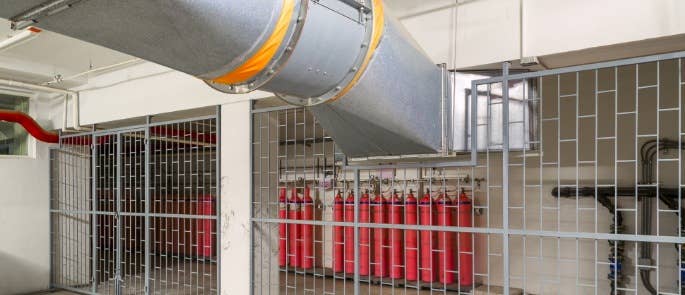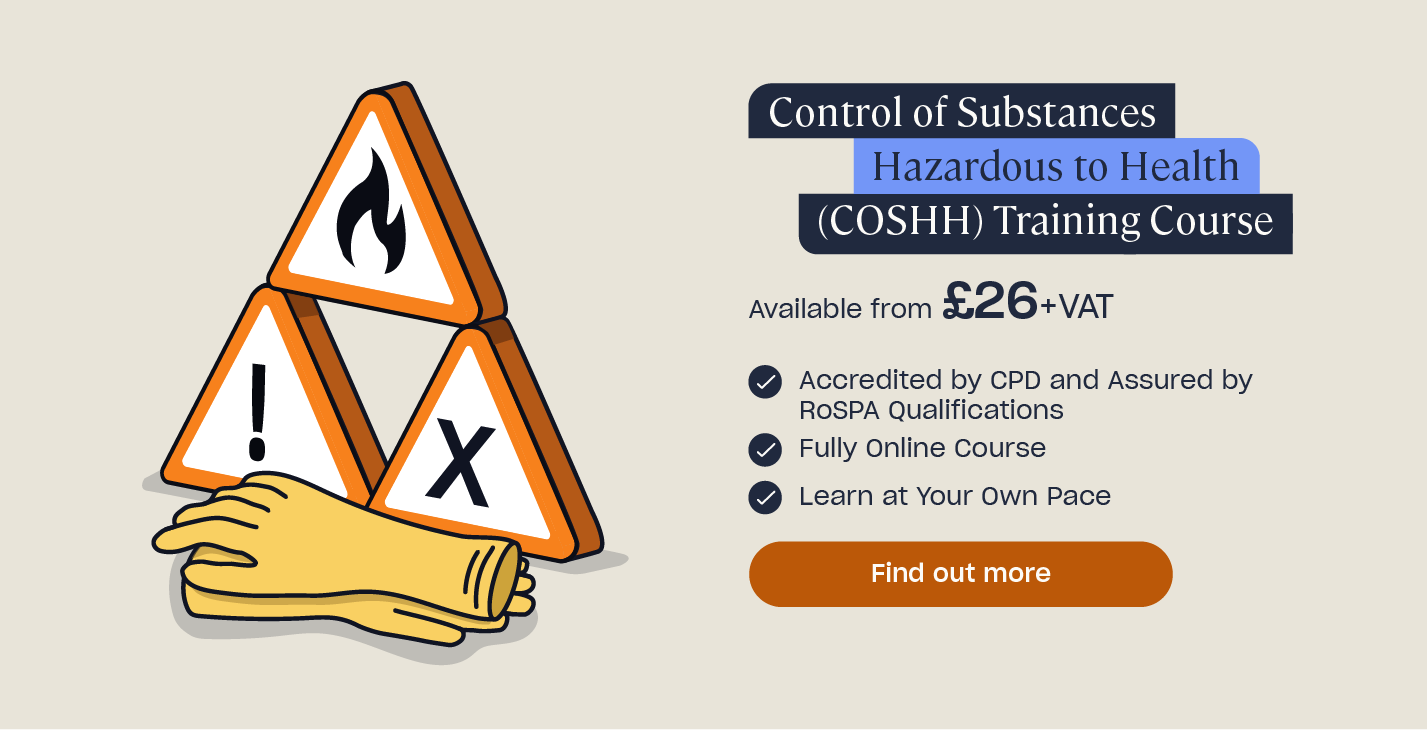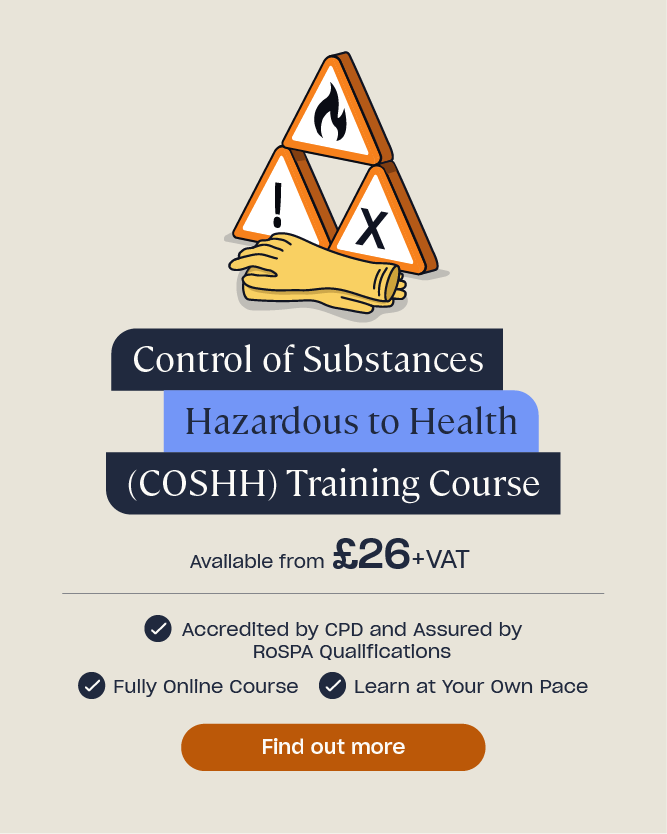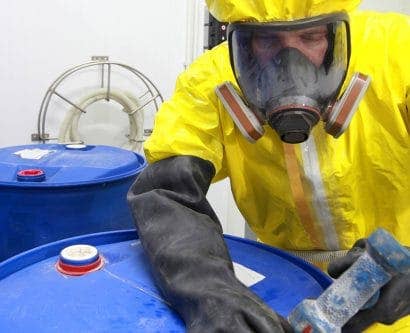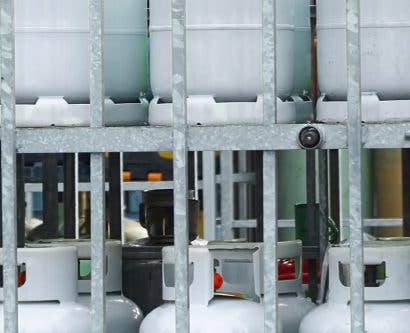COSHH Storage Requirements
This article explains the Approved Code of Practice L138 (2013) for COSHH storage requirements and summarises how to comply with DSEAR.
Best Practice COSHH Storage Requirements
This article explores best practice in reference to the following areas:
- Risk Assessments for COSHH
- Circumstances of work
- How to eliminate and reduce risks
- How to store flammable liquids
- The storage and use of cylinders
- How to ventilate COSHH storage areas
- How to keep COSHH storage areas secure

Risk Assessments
Risk assessments for COSHH should:
- Ensure there are separate storage areas from process areas (if the two are on the same or shared premises).
- Include considerations of the work circumstances, including the arrangements for the safe handling, storage and transport of dangerous substances and of waste containing dangerous substances.
Work Circumstances
When you assess and/or design activities involving dangerous substances (such as work processes, process and storage plant, and the workplace itself), take all relevant factors into account, including:
- Substance properties including corrosivity, reactivity, volatility, flashpoint, and electrical conductivity.
- Quantities and storage methods, e.g. in bulk tanks or in containers.
- Location relative to other features, including adjacent premises, site boundaries, occupied buildings, process areas, heat sources, fixed sources of ignition, other dangerous substances, and vehicle thoroughfares.
- Loading and unloading operation, and frequency of deliveries.
Eliminating and Reducing Risks
- When you need to use a dangerous substance for a work activity, only store the minimum amount needed for the activity. Store substances in process areas, workrooms, laboratories, and similar working areas.
- After use, return dangerous substances to the designated storage area.
- Retail premises that sell dangerous substances in closed containers must keep the quantity stored at point of sale to a minimum. The minimum should be consistent with the needs of the business.
Need a Course?
Our COSHH Training provides suitable training for all levels of employees who work, or may come into contact with, hazardous substances in the workplace.
Storing Flammable Liquids
This part looks at how to safely store flammable liquids in process areas, workrooms, laboratories and similar working areas. Many work activities require flammable liquids or liquid-based products to be conveniently available.
If you need to store flammable liquids, best practice states that:
- A limited quantity of flammable liquids in suitable closed vessels may be stored in suitable cabinets or bins of fire-resisting construction. These should be designed to retain spills (capacity should be 110% volume of the largest vessel normally stored in it).
- Cabinets or bins should be located in designated well-ventilated areas that are away from the immediate processing area where possible and do not jeopardise the means of escape from process and other areas.
- Flammable liquids should be stored separately from other dangerous substances that may increase the risk of fire or compromise the integrity of the container, cabinet, or bin, such as energetic substances, oxidizers and corrosive materials.
What are the recommended maximum quantities you can store in cabinets and bins?
- No more than 50 litres for extremely, highly flammable and those flammable liquids with a flashpoint below the maximum ambient temperature of the workroom or working area.
- No more than 250 litres for other flammable liquids with a higher flashpoint of up to 60°C.
What are the performance requirements for fire-resistant cupboards and bins?
These criteria are the minimum performance requirements for compliance with current legislation:
- The materials used to form the sides, top, bottom, door(s) and lid should be capable of providing the required fire resistance (i.e. 30 minutes’ integrity) and reaction to fire (i.e. minimal risk).
- The joints between the sides, top and bottom of cupboards and bins should be free from openings or gaps.
- The lid or doors should be close-fitting against the frame of the bin or cupboard such that there is a nominal overlap between the frame and lid or doors in their closed position.
- The supports and fastenings should be of a material with a melting point greater than 750°C.
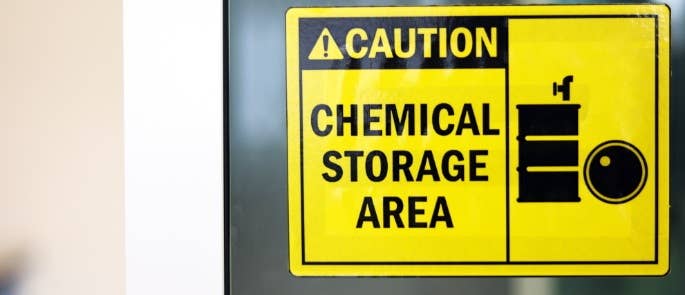
Storing and Using Cylinders
- Keep gas cylinders and cartridges below 50°C. This is because if temperatures rise, there is an increased risk of over-pressurisation, gas discharge or rupture.
- Where possible, don’t keep gas cylinders containing dangerous substances in process areas, etc. There’s an exception, though. This is for gas cylinders connected to portable appliances. The number of these should be limited to the minimum necessary for operational requirements.
- Where the appliance is fixed, situate gas cylinders in a safe location outdoors and pipe the gas indoors to the appliance.
- Unused gas cylinders (i.e. not connected to an appliance) should be stored in safe, secure uncongested locations in the open air. This is to disperse gas if necessary and prevent accumulations or entry of gas into enclosed areas.
- Store nominally empty cylinders in safe location outdoors to separate them from gas cylinders in use (i.e. connected to an appliance).
- Exceptionally, you may store gas cylinders indoors where there is a specific safety, security or process quality consideration.
- Where the number of gas cylinders required indoors is so few that a dedicated storeroom is unjustified, use a dedicated cabinet or cupboard of adequate fire resisting construction.
- Do not use the same storeroom, cabinet, or cupboard to store gas cylinders and those nominally in use (connected to an appliance). Nor should you use these to store incompatible substances or materials that pose a risk to the cylinders.
Ventilating COSHH Storage Areas
Closed systems or suitable processing and handling methods should be the first method to eliminate or minimise the release of dangerous substances.
- Local exhaust ventilation (LEV) should be provided for processes where there is an unavoidable release of a dangerous substance.
- Locating plant and storage facilities in the open air normally ensures the best possible dispersion of dangerous substances. This will limit the formation and extent of hazardous explosive atmospheres.
- Ventilate indoor plant and storage facilities to limit the formation and extent of hazardous explosive atmospheres (this is an employer responsibility).
Keeping COSHH Storage Areas Secure
The level of security for storage areas depends on the potential consequences of a fire and the security already present.
Security measures should take into account the possibility of arson and vandalism as well as fire precautions and control measures.
Examples of security measures include:
- Locks on storeroom doors.
- Welded mesh.
- Chain-link fencing.
- Intruder alarms.
- Security patrols.
- Lockable covers to filling and discharge connections.
Further Resources:
- The History and Importance of COSHH
- The COSHH Hazard Symbols & Their Meanings
- COSHH Quiz
- What is COSHH Training and Why is it Important for Cleaners?
- Understanding DSEAR – Area Classification & Hazardous Substances
- How to Safely Store, Handle & Dispose of Corrosive Chemicals
- COSHH – A Guide to Employers’ and Employees’ Responsibilities
- COSHH Training


